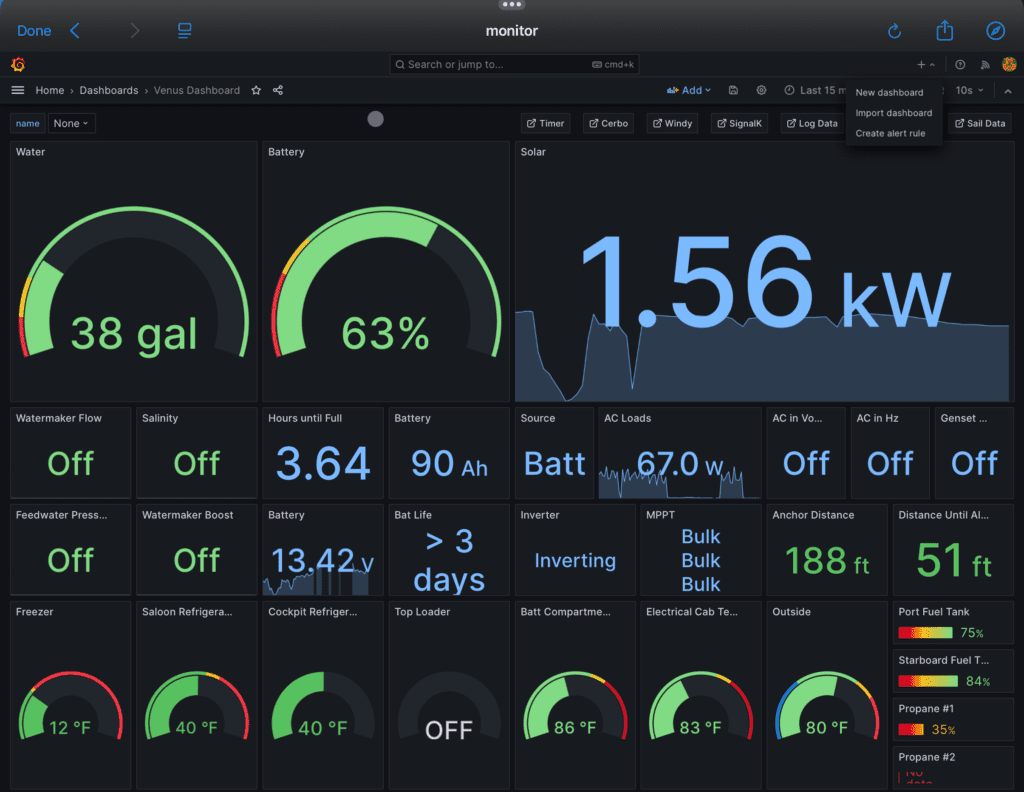When we set off on Sabado to live a life at sea, one of the most exciting thoughts was disconnecting from the world. In reality, we found that we needed to be connected for many reasons. Weather, checking into countries, staying connected with family and friends, and sharing our stories are just a few. While we do have Starlink, which we will discuss below, we also want our phones to be connected when we’re off the boat.

With the monitoring system on Sabado, we have the ability to be alerted on our phones if anything is out of the ordinary. For the monitoring system to work, we need internet on Sabado and on our phones. Starlink has almost 100% solved the internet issue on Sabado, but our cell phones still need something. That’s where data-only eSIMs have helped us, making it easy to stay connected without the hassle of traditional cell phone plans. Here’s why we’ve made the switch and how it works for us while traveling:
Why eSIM?
First off, what is an eSIM? Unlike the traditional physical SIM card, an eSIM is downloaded directly to your phone, allowing you to switch carriers without the need for a physical card. This is a game-changer for travelers! With a data-only eSIM plan, you can get connected almost anywhere without the fees and contracts associated with international roaming from traditional cell providers.
It’s super easy to set it up as well. Imagine sailing into a new port and realizing you need a local data plan. With an eSIM, you can purchase a plan right from your device (connected through Starlink) with just a few taps. There is no need to scramble to find a store or deal with complicated activation processes. No contracts, no talking to anyone, nothing. Just pick the plan and install the eSIM.
Choosing a Data-Only eSIM Plan
When we add a cell plan this way, we choose data-only packages from reputable eSIM providers that offer global coverage. There are a variety of providers out there, so it’s important to do a bit of research to find the one that suits your needs best. Some plans allow you to purchase data in specific regions, which is super flexible depending on where you are, and some plans are global. We never sign a contract, never have a recurring payment, and can select both the timeframe and the amount of data we want.

We use Airalo because they have been fast, cheap, and have always worked. We have zero affiliation with them; we are simply happy customers. Just make sure to check coverage maps before you dive in, as signal strength can vary by location. Even the best eSIM providers might struggle in some remote areas, so planning ahead is key.
Making Calls and Sending Messages
Keep in mind that with a data-only eSIM, you will not get a phone number; they only provide an internet connection. That’s where we use Google Voice. With Google Voice, we can make calls and send SMS messages over Wi-Fi or cellular data. I actually ported the phone number that I’ve had forever to Google Voice. One thing to keep in mind when using Google Voice or most VOIP services is that some text message-based two-factor authentication services, especially banks, won’t work with a new number. Because I ported an existing number that was already set up, I haven’t had any issues with this. As a side note, using SMS based two-factor authentication is really a bad idea anyway. You should be using a good password manager like Bitwarden that can store passwords AND two-factor codes.
While maintaining a phone number can be important for SMS service, we use apps like WhatsApp, Facebook Messenger, and Signal (our preference) for messaging our friends and family. These platforms are fantastic for keeping up with loved ones, sharing photos of stunning sunsets, and coordinating meet-ups with fellow sailors.
The Power of Starlink at Sea
Now, let’s talk about taking connectivity to the next level with Starlink, especially when you’re on passage far from cell service. Starlink is a satellite internet constellation designed to provide high-speed internet access across the globe, including remote marine environments. This can be a game changer for sailors.

We’ve had Starlink for over two years now and it has been amazing. Besides a few very heavy rain events, we have had continuous connectivity from Boston, down to Grenada, across the Pacific Ocean, and now, throughout French Polynesia.
Another great thing about using Google Voice and a messaging app like Signal is that they don’t care whether you’re on a cell phone connection or Starlink, they will work for phone calls, video chats, and messaging. We routinely had video chats while crossing the Pacific! There are cell phone services that will also allow wifi calling that will work with Starlink as well.
A Few Things to Keep in Mind
While eSIMs and messaging apps are fantastic, there are a couple of things we’ve learned along the way:
- Have a backup plan. Not every remote area has reliable internet, and it’s very easy to believe that Starlink will always work when it might not. Download charts, maps for land, and important info ahead of time, and consider investing in a satellite phone (we use Iridium Go!) for true off-grid adventures. A Garmin InReach is another good backup option.
- Always check if your apps or charts need updates before you set sail. You don’t want to find yourself in a remote anchorage only to discover that your messaging stopped working or your charts are out of date.
- Be mindful of your data consumption. If you’ve opted in for Priority service on your Starlink, you will be paying for the amount of data you use. Streaming videos and music can quickly eat up your data, so consider downloading content when you are near shore and not paying on a usage basis.
- Turn on low data mode, metered network, or whatever your phone, tablet, or computer calls it. If you’re on a metered connection, you could be one system update away from spending a boat load 🙂 of money.
Our dreams of removing ourselves completely from connectivity may not have been realized, but we still enjoy the adventure, freedom, and thrill of the unknown. That doesn’t mean we have to cut off all communication. With a data-only eSIM and a few handy apps, along with the incredible capabilities of Starlink, staying connected has never been easier, and we can simply choose when to be connected.
Hopefully, you find some value in how we stay connected on Sabado and if you do, please consider subscribing to our blog.
Happy sailing! 🌊⛵️


2 Responses
Hello Sabado!
Your videos in youtube and such kind of posts are just so so so very valuable for others who plan or just starting to sail or living on a sailboat. You are helping such people (including myself) so very much, to prevent mistakes, to make short-cuts for smart choices, to avoid dangerous situation and to have fun.
My family our plan is to buy Lagoon 42 in upcoming hears and live pretty much like you are living at the moment and it is very valuable to see your life, your practises, your ways-of-doing things etc. Thank you so very much!
We are just so grateful for your work you have put into the videos and blog. Wishing you all the best and fair winds and as one sailor said have fun dancing with the wind and sea.
Thank you so for the kind words, it means a lot to us. You’re going to love the Lagoon 42, she’s a great boat. Please keep in touch with us, we would love to follow your adventure.